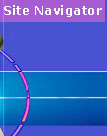 |
 |
 |
| The well-known illusion of the Hermann grid is a typical example (figure 1) of an environment which influences the perception. |
 |
|
 (figure 1)
(figure 1) |
||
|
There are certain illusions where vertical line appear larger and substantially longer (figure 2) because it is perceived as an external corner of the cube whereas the right-hand figure is the corner of a cube viewed from inside of room which is a Muller-Lyer illusion that may be absent to those who grew up in a circular environment. |
 |
|
 (figure 2)
(figure 2) |
||
|
Zulu people in South Africa who lived in circular huts with the arch doorways had little experience of western rectangular buildings. These tribals were not affected by this illusion. The people lived in a "circular culture" perceived differently than those who live in a "carpentered world". Urban people are more unlikely to interpret oblique and acute angles as displaced right angles and perceive two-dimensional drawings in terms of depth. The horizontal vertical illusion (figure 3) has lines equal in length but here the vertical line seems to be longer than the horizontal one. |
||
 (figure
3) (figure
3) |
||
|
This
illusion may be stronger for people who are familiar with straight lines
receding over considerable distance. It has been a notion that people
who dwell in enclosed areas such as forests and are not used to vast
open spaces and those who have little opportunity to see the horizon
or far great distances would be less susceptible to horizontal vertical
illusion than those with long uninterrupted views.
|
« back to topics | next topic » |
